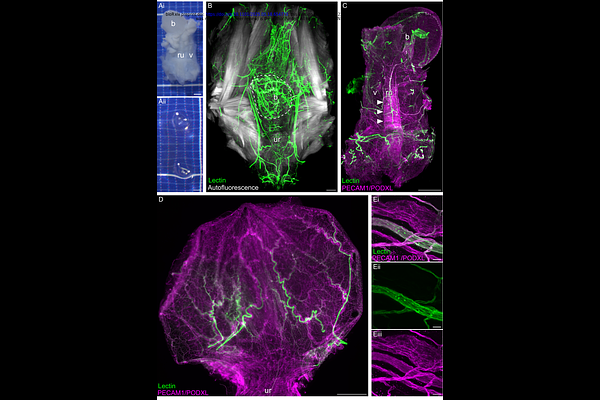A multi-scale vascular atlas of blood vessels within the urinary bladder of male and female mice

A multi-scale vascular atlas of blood vessels within the urinary bladder of male and female mice
Bowden, L. D.; Daglas, M.; Osborne, P. B.; Keast, J. R.
AbstractThe vascular supply of the urinary bladder is embedded within a highly dynamic environment that includes alternating cycles of regional compression or stretching during bladder filling, sustained continence and voiding. These place unique demands on the vasculature to maintain tissue perfusion, fluid homeostasis and immune surveillance. Understanding this vascular regulation is also highly relevant to defining mechanisms of organ reperfusion following pelvic surgery, pelvic venous insufficiency, and the impacts of diabetes and ischemia on urinary function. There is limited anatomical knowledge on the organization of this vascular network, so we aimed to determine if there are stereotypical features associated with the mouse urinary bladder. We applied advanced microscopy and anatomical visualization methods to samples of the entire bladder viewed as a whole mount, including intravital tomato lectin labeling of the arterial vasculature, multi-channel immunofluorescence, tissue clearing, light-sheet and confocal microscopy. We developed a comprehensive multi-scale 3D anatomical map of the stereotypical arterial and venous networks associated with the mouse urinary bladder in both sexes, showing that the primary features of this network are established by the early postnatal period, prior to maturation of voiding and continence reflexes. These outcomes provide the foundation for probing mechanisms that underpin physiological and pathophysiological changes in the urinary bladder vascular network and a resource to guide more refined experimental perturbation, analysis and interpretation of vascular function/dysfunction in mouse models. This new knowledge on the structure of the urinary bladder vascular network will also benefit tissue engineering efforts seeking to restore or replace this organ.